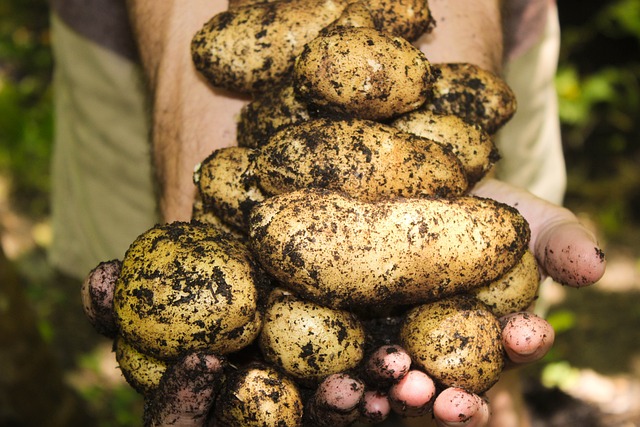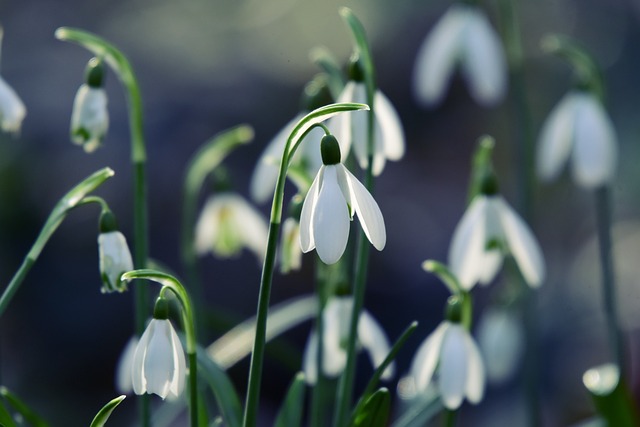Spring marks a fresh start for gardeners, focusing on landscape assessment, debris removal, and pruning. Strategic lawn care involves morning watering, aiming for 1-2 inches of water weekly. Seasonal maintenance, including pruning, fertilizing, pest control, and mulching, ensures robust grass growth year-round. Fall cleanup, pruning, fertilizing, and mulching prepare lawns for winter. Winter demands protection from cold, specialized pruning, tailored watering, and fertilizing to ensure spring health. These practices optimize garden preparation throughout the year, emphasizing seasonal maintenance.
Aligning your lawn care with nature’s rhythms ensures a lush, healthy landscape year-round. This guide navigates the key stages of seasonal garden maintenance: from spring’s vital preparation and summer watering wisdom to fall cleanup strategies and winter protection tactics. Discover optimal fertilizing schedules, effective pest control for each season, and the art of mulching to adapt your lawn to nature’s ever-changing tapestry.
- Spring Garden Preparation: Setting the Stage for a Thriving Season
- Summer Watering Tips: Balancing Growth and Conservation
- Fall Cleanup Strategies: Preparing Your Lawn for Winter Rest
- Winter Garden Protection and Pruning: Ensuring Survival and Future Bloom
Spring Garden Preparation: Setting the Stage for a Thriving Season

Spring marks a crucial time for any gardener, serving as the perfect catalyst to set the stage for a thriving season ahead. This is when our gardens awaken from their winter slumber, and meticulous spring garden preparation can make all the difference in the health and vibrancy of your plants throughout the year. Start by assessing the overall condition of your lawn and landscaping, removing any debris or dead vegetation accumulated during the colder months. This initial step ensures a clean slate for new growth.
Now is also the time to consider essential seasonal garden maintenance tasks like pruning—a vital practice for maintaining plant health and shape, especially in woody perennials and shrubs. Fertilizing schedules should be adjusted for this season, focusing on promoting robust spring growth with balanced nutrient applications. Additionally, implementing effective pest control measures early can prevent infestations from escalating during the warmer months. Don’t forget the power of mulching; it’s a simple yet powerful tool to regulate soil temperature, retain moisture, and suppress weeds—all crucial factors in aligning with natural seasonal changes for a thriving garden.
Summer Watering Tips: Balancing Growth and Conservation

Summer brings intense heat and prolonged dry spells, testing the health and resilience of your lawn. To ensure your grass thrives while conserving water, implement strategic summer watering tips. Morning is the best time to water as cooler temperatures reduce evaporation. Set your sprinkler to run for shorter periods at regular intervals to encourage deep root growth rather than shallow roots that are prone to drought stress. Aim for 1-2 inches of water per week from all sources—rain and irrigation. Remember, less frequent but thorough watering promotes a healthier lawn than daily light applications.
Alongside watering, consider seasonal garden maintenance practices like pruning, fertilizing, and pest control. Prune dead or damaged branches to improve air circulation and reduce the risk of pest infestations. Fertilize according to your grass type and local climate, typically in early spring and late summer, avoiding excessive nitrogen application in hot months to prevent leggy growth. Implement seasonal pest control measures as needed, focusing on common summer pests like grubs and chinch bugs. Don’t forget mulching! A 2-3 inch layer of organic mulch conserves moisture, regulates soil temperature, and suppresses weeds—all crucial for a lush, healthy lawn throughout the summer.
Fall Cleanup Strategies: Preparing Your Lawn for Winter Rest

As the seasons change, so do the needs of your lawn. Fall is a critical time to prepare your lawn for winter rest and ensure a lush, healthy rebirth in spring. One of the most effective strategies during this period is thorough fall cleanup. This involves removing dead foliage, fallen leaves, and any remaining debris from your lawn and garden beds. By doing so, you reduce the risk of pest and disease issues that can arise over the colder months.
Additionally, consider pruning seasonal plants to maintain their shape and encourage new growth in spring. Fall is also an ideal time for fertilizing, as it helps strengthen grass roots before winter dormancy. Adjust your watering schedule according to the season—summer’s heavy watering should transition to less frequent but deeper waterings during fall to prepare turf for reduced moisture levels in winter. Mulching is another essential practice; adding a layer of organic mulch not only protects plants from harsh winters but also enriches soil and retains moisture, ensuring your garden beds are ready for spring planting.
Winter Garden Protection and Pruning: Ensuring Survival and Future Bloom

Winter poses unique challenges for lawn and garden care, requiring specific strategies to protect plants and ensure healthy growth come spring. One essential practice is proper winter garden protection, which includes covering sensitive plants against cold temperatures and potential snow accumulation. This can involve using blankets or specialized coverings designed to insulate and safeguard delicate flora. Additionally, pruning is a vital task during the off-season. Removing dead or damaged branches not only enhances aesthetic appeal but also encourages new growth in the upcoming spring. Pruning seasonal plants according to their specific needs ensures a robust and vibrant garden when warmer months arrive.
Beyond protection and pruning, fostering plant health throughout the winter involves thoughtful watering and fertilizing schedules tailored by season. While summer may require extra attention to keep lawns hydrated, spring and fall offer opportunities for strategic fertilization to promote root development and future blooming. Seasonal pest control is another crucial aspect; identifying and addressing pests early can prevent widespread damage. Mulching is a valuable technique to implement during seasonal changes, providing insulation in winter and helping retain moisture during hotter periods, thus contributing to overall garden health and reduced maintenance efforts.
By aligning lawn care practices with seasonal growth patterns, you can achieve a lush, healthy lawn year-round. From spring’s vital preparation and summer’s strategic watering to fall cleanup and winter protection, each season offers unique opportunities to nurture your garden. Implement these seasonal garden maintenance tips, including fertilizing schedules, pest control measures, and mulching techniques, to ensure your lawn thrives during every phase of its growth cycle.
